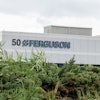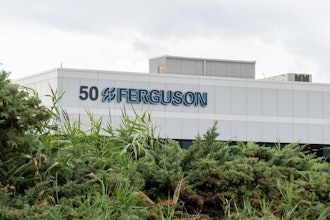
It is difficult to predict leaders' responses to change, as they must continually be on guard for unpredictable occurrences and forces, and in some cases immediately respond to a series of unknown and unanticipated events and circumstances. The only certainty is that change will occur, and leaders must be at the forefront of the process regardless of circumstances and apprehensions.
Change undoubtedly poses a challenge to every leader. This is because it can be anticipated only to the degree that it is predictable. Long-term changes and trends can be generally anticipated, but these changes are often complicated by numerous factors and elements continually altering and transforming themselves at varying rates of speed.
The concept of change also demands that leaders embrace stability and instability within the organization as it transforms itself. Several strategies that leaders need to employ during periods of change include:
Being Visible
The very nature of leadership demands that leaders be actively involved in their organizational unit. Leadership does not emanate from behind a desk or within an office. Leaders must be active and visible in the front lines of their business. Only when leaders are out and about among their employees can they see and feel the pace of progress, and witness firsthand the problems their employees are encountering.
Testing
Paces of change and organizational transformations demand that countless ideas be constantly generated and experimented with at all levels. Undoubtedly, some ideas will fail and some will succeed. The only way leaders can sort out the winners from the losers is by constantly applying new ideas and concepts on the line to test for feasibility and adaptability to their organization.
Listening
As leaders become increasingly visible, it is important that they simultaneously begin to develop listening forums where everyone within their organizational unit is sharing new ideas, celebrating minor successes and learning from small failures. This increases the synergy between employees, builds and solidifies team bonds, and enhances overall organizational cohesiveness.
Appreciating Failure
As aforementioned, an organization's response to change as it transforms itself implies countless new ideas and concepts are being experimented with on a regular basis. Leaders know that constant experimentation means that they must test concepts, ideas and strategies rapidly--fail or succeed fast--and adjust quickly.
Active leaders must immediately discard bad ideas and learn from their failures. However, no idea can be deemed good or bad unless it has been adequately tested. The key is to learn from the failures and quickly move on to the next idea, building knowledge and expertise from a continual string of ineffective results, failures and shortcomings.
Taking Action
Leaders in the fast pace of change must be proactive rather than reactive. They cannot let the organizational bureaucracy interfere with the progress of their organizational unit. At times they must actively work against this bureaucracy when it regulates or inhibits the testing and experimentation of new ideas and concepts.
Effective leaders do not only involve their frontline employees in concept, idea and method experimentation, they encourage the participation of multi-functional teams as well, and work to get them fully involved in the process.
Learning from Customers
Leaders have learned that the external influence of the customer is a stabilizing factor in the midst of change. Successful leaders interact with their customers, and encourage employees at all levels to do the same. This can be accomplished through scheduled customer visits to the organization for discussions, observations and feedback, and by sending representatives out to the customer's business. Once there, their job is to objectively observe exactly how specific products and services are being used and applied. They also interpret what problems occur and why, as well as each one's impact on various time factors.
This allows leaders to cross-pollinate ideas and concepts throughout the organization so that all involved have mutual goals and objectives, increasing the overall quality of the product and its value to the customer.
Additionally, employee exposure to their customers makes daily tasks and assignments more tangible. Employees are able to see how the product they produce is used. This increases empowerment and overall responsibility toward the customer.
Making It Fun
The concept of change and accompanying process of organizational transformation are stressful. Most leaders have learned that they can ease stress by making certain elements of the process "fun." This is not to say that leaders create a jovial and joking atmosphere, but that there is pleasure and enjoyment in accomplishing something together as a team and sharing interesting failures and mistakes in a non-critical atmosphere. It means keeping things light, celebrating the little successes, and using them to build on others to the accomplishment of mutual goals and objectives.
Change will throw many curves at an organization. It takes large doses of flexibility and participation to adapt to these trials. It also helps if leaders and employees lighten up at times where stress is at its highest, which helps to reduce the urge to take things far too seriously.
---
Excerpt: Facilitating Change - Pinpoint Leadership Skill Development Training Series (Majorium Business Press, Stevens Point, WI 2011) $ 17.95 USD


















